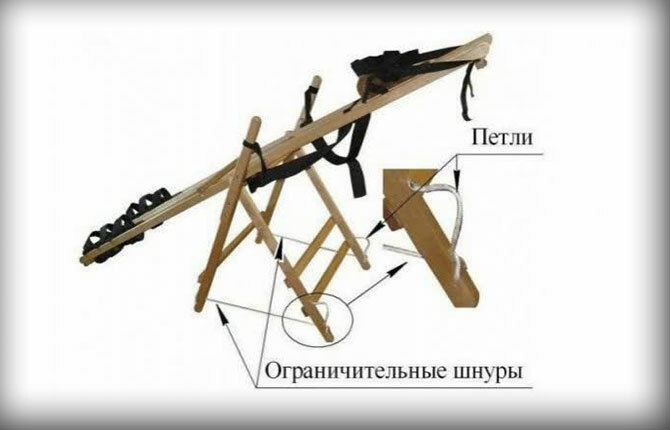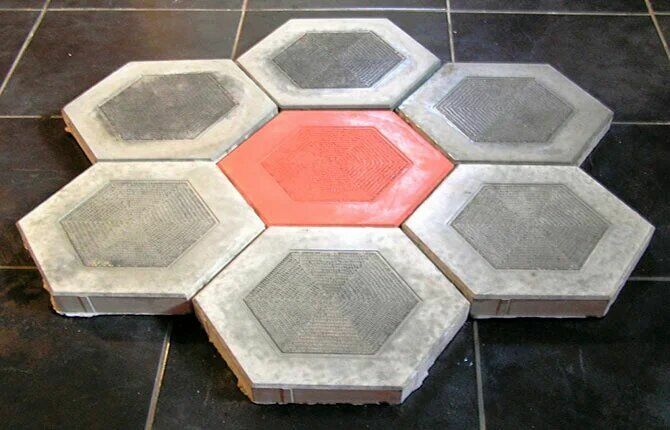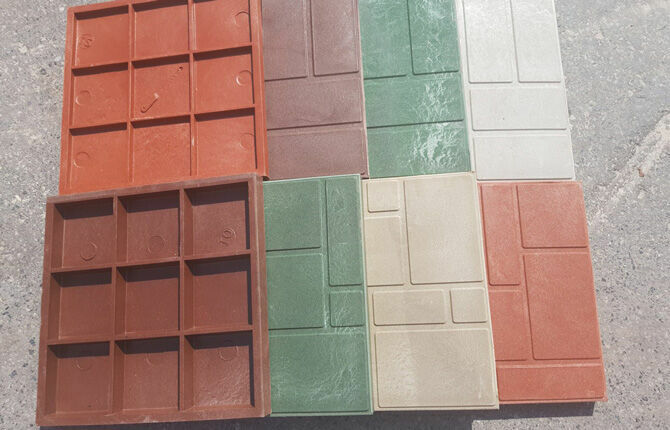Physical inactivity is the scourge of modernity. From this, the joints begin to hurt, especially the spine. Protrusion, hernia and displacement of the vertebrae are troubles that cause a lot of trouble. They can only be treated with exercises, one of which is hanging upside down. The exercise is difficult, and without a special device it cannot be done. And this is an inversion table.
The content of the article:
- What is an inversion table for?
- The advantages of self-manufacturing an inversion simulator
- What tools and materials will be needed
- Drawings and diagrams
- Step-by-step instructions for creating and assembling
What is an inversion table for?
You can also hang upside down on the crossbar. But not everyone can do it, even young people, not to mention the elderly. Therefore, an inversion table was developed that makes it easy to hang upside down and do other necessary exercises.
They are mainly aimed at improving the functioning of the musculoskeletal system: alignment of the vertebrae, improving blood and lymph flow. The inversion table can be used for both therapeutic and prophylactic purposes.
If you do exercises on it constantly, then people achieve serious results:
- The posture straightens.
- The muscles around the spine become elastic and dense, better hold it in the desired position.
- Inflammatory processes in the spine and protrusions disappear.
- The circulatory system functions stably, and this is already the prevention of such diseases as stroke, heart attack, hypertension, ischemia, vegetovascular dystonia.
Domestic and foreign industry offers the widest range of inversion equipment. Its price is high. And many people with health problems cannot do without this table.
But today there are a large number of drawings with step-by-step manufacturing instructions that you can take as a basis and make your own inversion table with your own hands.
The advantages of self-manufacturing an inversion simulator
The main plus is the price, which decreases significantly. Even if you use expensive materials, the cost will still be lower. At the same time, it is possible to choose for manufacturing the wellness unit that will exactly meet your own requirements. Plus - the safety of operation increases due to the fact that you make a device for yourself.
Usually factory models are made either from metal or from durable plastic. The first are intended for use in health centers, in physiotherapy rooms in clinics and other medical institutions. Their weight is not less than 50 kg, they can withstand the patient's weight up to 200 kg.
Plastic counterparts are intended for personal use. They are bought in the house where the exercises are carried out. All actions are preventive in nature. That is, it is better not to apply therapeutic loads at home. They must be carried out under the supervision of a physician.
Plastic inversion tables are lightweight and usually foldable. When folded, they do not take up much space, they are not difficult to carry.
It is better to make an inversion table with your own hands from lumber. Fortunately, today it is the cheapest material that is easy to process. You can even use chipboard.
You can assemble a table made of metal, it will be stronger than the wooden version. And yes, it will last longer. But such an inversion installation will be more expensive and heavier. Not everyone can make it with their own hands at home. Here you need the skills to work with locksmith tools. Somewhere even electric welding is required.
What tools and materials will be needed
If an inversion simulator is made of wood, then the following materials will be required:
- wooden beam, section 20x40 mm;
- steel pipe, diameter 25 mm;
- fasteners: bolts and nuts with washers, self-tapping screws;
- cord or cargo tape, at least 50 mm wide;
- colorless varnish or paint;
- fabric or leatherette.
Tools:
- jigsaw or saw;
- hammer;
- drill;
- a screwdriver, if it is not there - a screwdriver;
- knife;
- wrench;
- a grinder with a grinding wheel, if it is not there, sandpaper and a bar on which it is put on;
- tassel.
Drawings and diagrams
The main dimensions of the inversion table:
- installation height;
- table length.
Factory models are sliding. These two parameters can be adjusted on them. In homemade simulators, this can also be done, but it is difficult. Therefore, it is better to make a stationary model, but take into account the height of the tallest person in the family.
This is especially true for the table. Its length should be more than a person's height by 10 cm. The installation height is also selected based on growth. A tall person should hang upside down so as not to touch the floor with his head.
If all this is not taken into account, that is, if the dimensions are not selected for the individual growth of the largest member of the family, then he will certainly not be able to perform any exercises. But there are standard sizes that fit a large number of people. Here are the dimensions of the table - 1.5x2 m. They can be safely taken as a basis.
Other standard options:
- inversion table height - 2 m;
- width - 1.5 m;
- the angle between the inclined support posts is 40º.
The tabletop can be made from slats with a section of 30x30 mm or from a chipboard sheet 16 mm thick, which is folded in half. Its total thickness will be 32 mm. Although 20 mm will do.

Step-by-step instructions for creating and assembling
There is one important requirement for a wooden inversion table - the corners and planes of the beams and rails should not cling to clothes. Therefore, all prepared lumber will need to be pre-sanded.
But before that, it must be cut into elements included in the design of the simulator. You can do it yourself or order trimming in the furniture manufacturing workshop. Some sellers of lumber also offer this service - paid or free.
It is possible to cover the prepared elements with varnish or paint before or after the assembly of the table, that is, the entire structure as a whole.
And a few more preparatory operations before making a table with your own hands:
- Drill through holes in the bars where the elements will be hinged with a steel tube.
- Before that, the tubes themselves must be cut to the required size - these are 4 bar widths, plus the distance between the support posts.
Now you can start assembling the inversion table.
- Support posts are connected. To do this, they are applied to each other with mounting holes, where a trimmed metal tube is inserted so that it connected 2 pairs of supports located at a distance of 1.6 m. You probably won’t be able to insert it by hand, to help hammer. The tube will become a support for the tabletop of the inversion simulator.
- There is another option. To do this, the tube is cut to a length equal to the width of the bar. Each is inserted into its own rack. And the fastening is made with a bolt, which is inserted through the tube. It must pass through 2 pillars. A nut is screwed on the opposite side of the bolt head. Mounting completed. It is more reliable than the first option. Although it can be strengthened by inserting a bolt into the swivel. A wide washer is placed under the bolt head and under the nut. The bolts must be long, because in this case they will become a support for the countertop.
- Installation of cross bars. They will connect the support legs on different sides of the inversion table. It turns out 2 pairs of inclined rectangular structures, connected by hinges in the form of tubes and bolts.
- So that the supporting structures do not move apart during the exercises, they must be limited. To do this, you need to put 2 limiters. These can be removable rails that are put on incompletely screwed screws or a strong cord. For the latter, through holes can be made in the bars, where it will be tied. Another option is to attach the cord to a wooden post with a self-tapping screw, placing a washer under it. By the way, the restrictive cords are clearly visible in the photo below.

Now the assembly of the tabletop with dimensions of 1.5x2 m. It can be cut out of a chipboard sheet, even used. And it's easier than cutting the slats and connecting them into one structure. Chipboard can be sheathed with fabric or leatherette. This must be done before assembling the inversion table. The fabric is stuffed on the surface of the countertop not for beauty. It will create a certain resistance, which will help keep the human body on the surface of the countertop.
Next, you need to install loops from a leather belt or cargo tape. There will be several of them, but the main ones are at the bottom of the tabletop, where the feet will be located. There are three loops on each leg for reliability, because hanging upside down is creating a large load on the loops with the weight of the whole body.
Other loop locations: hip joint, chest, arms. So that, being upside down, it would be possible to rise to its original position - upside down, it is necessary to attach rubber bands to the upper ends of the supports - one for each side. Pulling up on them, a person will move from an overturned position to a vertical straight line.
The harnesses will also help you gently roll upside down. Although you can come up with a lot of options to replace rubber with another material. For example, it can be a regular rope or a strong fabric tape.
There is a problem of fixing the countertop to the steel pipe. In this case, the fastening must be articulated, because the tabletop must rotate around the pipe. You can use different types of hinges for this. The simplest is a shaped wooden part in the form of a support with a through hole in the middle. There must be at least 2.
A pipe is passed through this hole during the assembly of the support legs. After the shaped part is attached to the bottom plane of the tabletop. Fasteners - self-tapping screws or bolts with nuts.
If the top of the inversion table is made of bars, then the latter must be selected with a large section so that holes can be drilled into them for a steel pipe. At the same time, the strength of the bars should not decrease so that when performing exercises, they do not break in the area where the steel horizontal pipe support passes.
The video below shows almost such a wooden structure of the inversion table, which was made by hand:
If someone has already had the experience of creating an inversion table (spine simulator) for themselves or their loved ones, tell us in the comments how it all happened. What material was it made from? What design did you choose? What do you recommend paying attention to?


